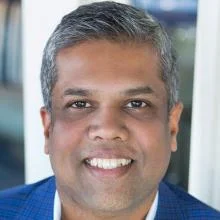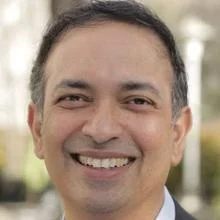What’s at the top of your digital transformation to-do list?
If you are conflicted about what to prioritize for the year ahead, you’re not alone.
“Many anticipate macroeconomic conditions will be challenging in 2023, given concerns around inflation, supply chain issues, geo-political tensions, economic uncertainty, etc.,” says Milind Wagle, EVP & CIO of Equinix. “All organizations are under intense pressure to protect their revenue models and sustain their competitive edge during this volatile environment.
“Undoubtedly, digital technologies will play a huge role in enabling and securing those revenue streams and unlocking more opportunities for efficiency.”
Winners of the 2022 Bay Area CIO of the Year ORBIE Awards shared their thoughts on which aspects of digital transformation they believe will be most important, and why. From hybrid cloud to automation, to frictionless digital experience, here’s what CIOs are prioritizing for 2023 and beyond.
Cloud, mobile, and virtual collaboration

Dave Smoley, VP, Apple: There are three areas of digital transformation that I believe will continue to be important in 2023 and beyond. The first is the area of cloud; elastic compute and storage. While this space has developed significantly, the potential to scale is massive, there are many industries and companies where we have yet to fully apply the power of cloud.
Similarly, the potential to leverage mobile device compute more than we have to date is massive.
A third area would be virtual collaboration and meetings. COVID forced us to leap forward in this area, and there is no looking back. We must continue to evolve technology to make working remotely more seamless and simpler.
[ Learn the non-negotiable skills, technologies, and processes CIOs are leaning on to build resilience and agility in this HBR Analytic Services report: Pillars of resilient digital transformation: How CIOs are driving organizational agility. ]
Frictionless digital experiences

Ellora Sengupta, VP & Head of Business Technology, Procore: For 2023 and beyond, designing and selecting engaging, connected, and frictionless digital experiences to attract and retain customers and employees will be very important for CIOs. Customers and employees have lots of choices, and the best of those choices will provide simple, connected, intuitive experiences that enhance productivity.
We expect everything to be connected in our personal lives (smart homes, automated check-ins at airports and hospitals as we approach the facilities, etc) and this is beginning to extend to smart cities and smart countries. In addition, harnessing the power of data, powered by flexible and smart APIs, and driving the next best action with data will continue to be very important.
Cybersecurity and AI

Milind Wagle, EVP & CIO, Equinix: The two trends that will continue to emerge stronger next year are cybersecurity and artificial intelligence. Especially as technology becomes more accessible and democratized, these two technologies will become critical to keep our organizations safe and to drive unique business opportunities and efficiencies.
[ Related read IT hiring: Tackling the cybersecurity skills shortage ]
While these trends will unravel a new world of innovation next year, cloud migration will be a given for any digital infrastructure. Organizations have come so far on their cloud journeys that we can think of it as ubiquitous and a standard aspect of any technology trend conversation.
Real-time data sharing, and hyper-automation

Lisa Davis, SVP & CIO, Blue Shield of California: Within the healthcare ecosystem, we see the necessity for real-time access and data sharing among members, providers, and insurance companies to not only meet the demands and care needs of our members, but to illuminate critical issues surrounding health inequity.
In the year ahead, I will also be looking to see more focus on hyper-automation – where organizations rapidly identify, vet solutions, and automate as many business processes as possible. The technology we built our businesses on years ago is no longer supported at the level cloud-native platforms are today. Cloud technologies must become core to our operations in order to deliver digital capabilities anywhere and everywhere.
[ Also read 10 CIOs share advice on career development. ]
With the ability of the cloud to provide scalable and elastic IT capabilities “as a service,” our organizations will be in a better position to respond to and meet the health needs of our communities if we use advanced technologies – including artificial intelligence and machine learning – to target healthcare services when and where they are needed.
Technology solutions for remote work and culture

Amy Farrow, CIO, Lyft: Technology is on center stage, now more than ever. Work flexibility is here to stay and is a win for inclusivity, productivity, and modernization. We will see a growing divide between those who take advantage of this opportunity versus those who lag.
Aspects that will be most critical include collaboration and flexible working tools, portfolio management, knowledge management, data insights, workflow automation, virtualization, securing a distributed flexible workforce. Attempts will be made to address culture with technology solutions, but that’s not well-formed yet.
The term ‘digital transformation’ feels outdated to me. What it means to me is enabling the business with technology and creating leverage. It’s not a separate imperative from the core strategy and treating it as such is outdated.
Hybrid cloud

Tony Sorensen, CIO, Five9: Digital transformation means something different to each company as we are all in different phases with a unique set of variables to manage. Given that, there are two areas that will be important in the coming years: the use of collaborative AI to create better customer experiences and managing public cloud costs.
Collaborative AI plays a supporting role for the person interacting with customers. The fundamental idea is two entities supporting a customer can provide better service than one.
Public cloud is often a part of the CIO’s digital transformation plans for all the known benefits. The challenge is that the costs may spiral out of control quickly. A thoughtful and carefully managed approach will result in an optimized hybrid of public cloud and on-premise. Some companies have swung the pendulum too far and are now moving selected services back on-premise to create a balanced cost model.
Flexible architecture

Carter Busse, CIO, Workato: For 2023 and beyond, CIOs will continue to be challenged to keep up with the pace of business. By focusing on a robust, secure, and flexible architecture, CIOs will be able to embrace new technologies when they get introduced by IT or the business. It will also be important that CIOs thoughtfully enable resources outside their teams with technology that will allow them to create their own internal products.
Data storage and analytics

Ravi Naik, CIO & EVP, Seagate Technology: As we work to solve the challenges of tomorrow, three trends are gaining momentum. One is geographic disaggregation of workloads – an independent data plane in which data resides in one place, therefore needing no transfer to and from various locations, and application stack changes as needed. This scenario would diminish friction and time to insights, as well as lower data-related costs.
Another trend is cost-friendly storage for log streaming and intelligent analytics. To enable log streaming and analytics, there’s a need to build repositories that rely on vastly more affordable mass-capacity storage.
Cloud simplification is another trend to watch. Organizations are seeking simplification of architectures without the unpredictability of costs, services, and complex layers of tech at scale. It’s admittedly a tricky endeavor because the fixes themselves can invite more complexity and disruption.
[ Check out essential career advice from 37 award-winning CIOs! Get a variety of insights on leadership, strategy, and career development from IT executives at Mayo Clinic, Dow, Aflac, Liberty Mutual, Nordstrom, and more: Ebook: 37 award-winning CIOs share essential IT career advice. ]



